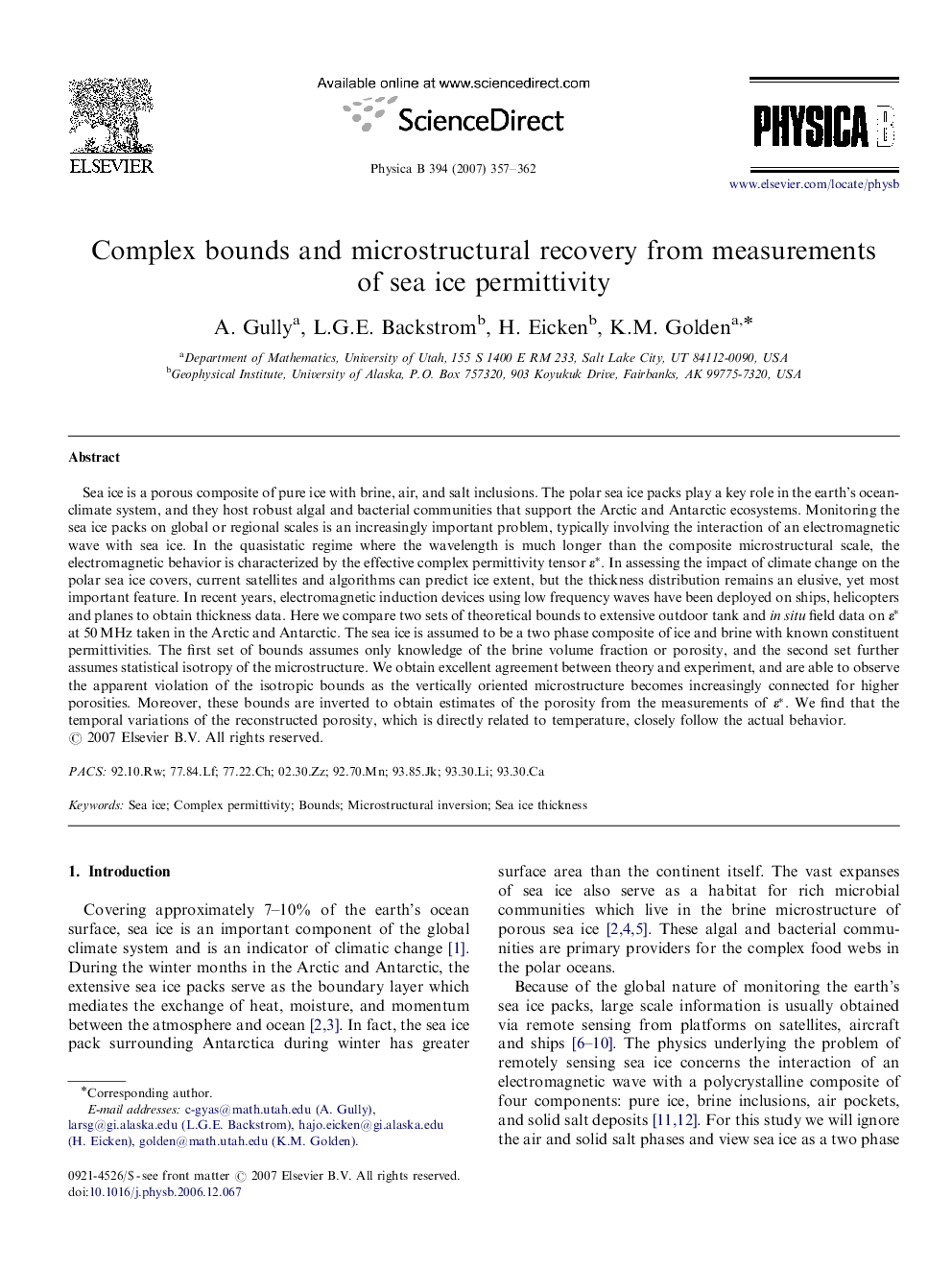| Article ID | Journal | Published Year | Pages | File Type |
|---|---|---|---|---|
| 1816005 | Physica B: Condensed Matter | 2007 | 6 Pages |
Sea ice is a porous composite of pure ice with brine, air, and salt inclusions. The polar sea ice packs play a key role in the earth's ocean-climate system, and they host robust algal and bacterial communities that support the Arctic and Antarctic ecosystems. Monitoring the sea ice packs on global or regional scales is an increasingly important problem, typically involving the interaction of an electromagnetic wave with sea ice. In the quasistatic regime where the wavelength is much longer than the composite microstructural scale, the electromagnetic behavior is characterized by the effective complex permittivity tensor ε*ε*. In assessing the impact of climate change on the polar sea ice covers, current satellites and algorithms can predict ice extent, but the thickness distribution remains an elusive, yet most important feature. In recent years, electromagnetic induction devices using low frequency waves have been deployed on ships, helicopters and planes to obtain thickness data. Here we compare two sets of theoretical bounds to extensive outdoor tank and in situ field data on ε*ε* at 50 MHz taken in the Arctic and Antarctic. The sea ice is assumed to be a two phase composite of ice and brine with known constituent permittivities. The first set of bounds assumes only knowledge of the brine volume fraction or porosity, and the second set further assumes statistical isotropy of the microstructure. We obtain excellent agreement between theory and experiment, and are able to observe the apparent violation of the isotropic bounds as the vertically oriented microstructure becomes increasingly connected for higher porosities. Moreover, these bounds are inverted to obtain estimates of the porosity from the measurements of ε*ε*. We find that the temporal variations of the reconstructed porosity, which is directly related to temperature, closely follow the actual behavior.
